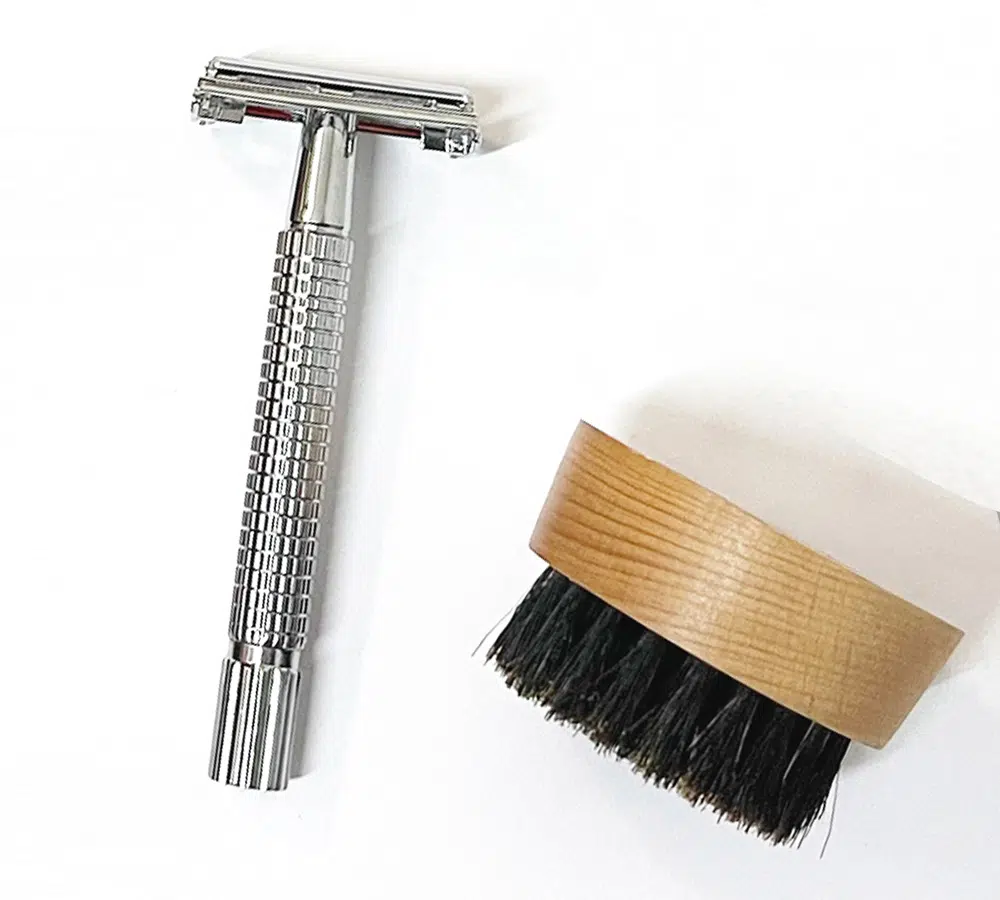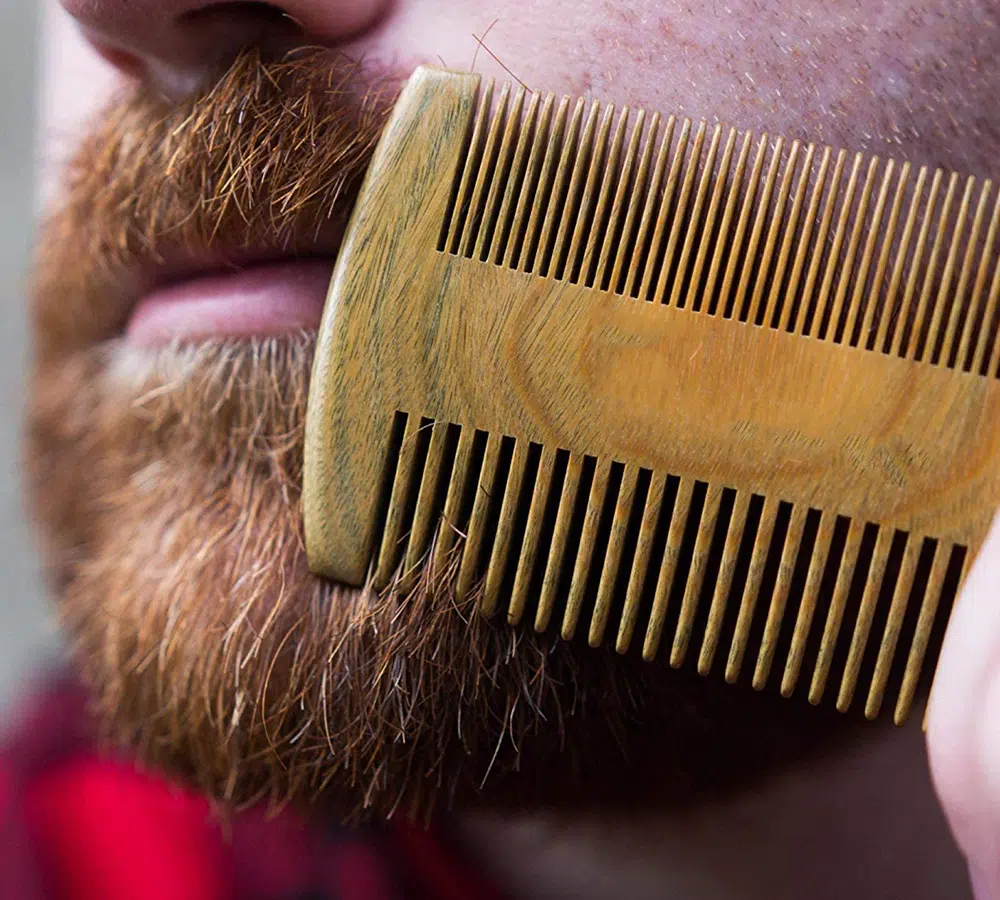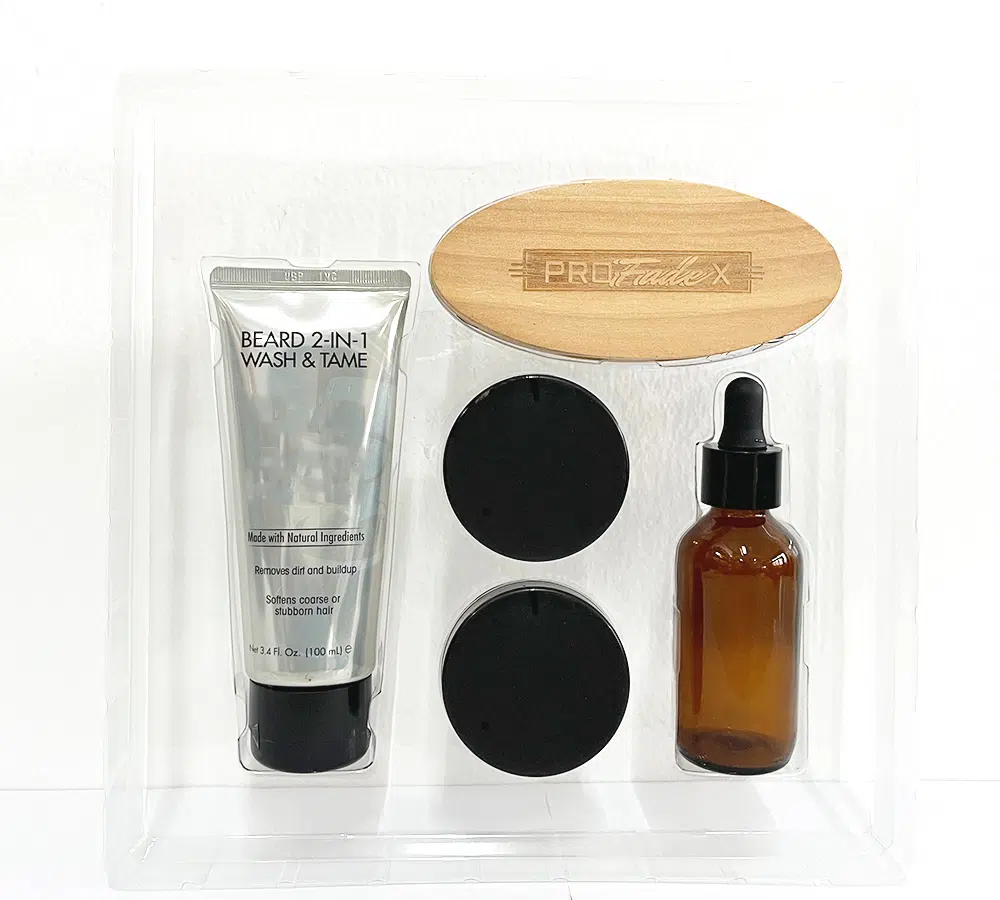In the world of grooming, one tool stands out as a true artisan’s implement – the shaving brush. Imagine a ritualistic morning routine, where the soft bristles of a carefully chosen brush glide across your skin, creating a luxurious lather that transforms a mundane task into a sensory experience. The art of grooming transcends mere functionality; it becomes a form of self-care, a moment of indulgence in an otherwise hectic day. Today, we delve deep into the realm of shaving brushes, unlocking the secrets behind this seemingly humble yet incredibly sophisticated tool. As we embark on this journey to master the art of male grooming, we uncover the fascinating history and evolution of shaving brushes. From ancient civilizations to modern-day barbershops, the shaving brush has remained a timeless symbol of refinement and elegance. We unravel the intricacies of different brush types, shedding light on how each bristle and handle design can elevate your shaving experience to new heights. Join Betterchois as we explore the ultimate guide to personal care accessories, which include the best shaving brush, razor and brush stand, and shaving set; revealing tips and techniques that will transform your daily shave from a chore into a delightful ritual. Let’s unlock the secrets of shaving brushes together and discover the exquisite world of male grooming like never before.

The Historical Roots of Shaving Brushes
The history of shaving brushes can be traced back to ancient civilizations, where men used various tools and techniques to achieve a clean shave. In ancient Egypt, for example, men would use a combination of sharp shells and pumice stones to remove facial hair. However, it was the Romans who first introduced the concept of using a brush-like tool for shaving.
During the Roman Empire, wealthy individuals would employ slaves or servants to assist them in their grooming rituals. These attendants would use brushes made from animal hair to apply soap or cream onto the face before shaving. This early version of the shaving brush laid the foundation for its future evolution.
As time went on, different cultures developed their own variations of shaving brushes. In medieval Europe, for instance, boar bristle brushes became popular due to their affordability and accessibility. The bristles were stiff enough to exfoliate the skin while creating a rich lather.
By the 18th century, with advancements in manufacturing techniques and materials, shaving brushes started to become more widely available. The introduction of badger hair as a preferred bristle material revolutionized the grooming industry. Badger hair was softer and more absorbent than boar bristles, making it ideal for creating luxurious lathers.

Evolution of Boar Shaving Brushes Through the Ages
Over time, shaving brushes continued to evolve in both design and functionality. During the Victorian era, ornate handles made from materials such as ivory or silver became fashionable among the upper classes. These handles not only added aesthetic appeal but also provided a comfortable grip during use.
In the early 20th century, synthetic materials such as nylon began to be used as an alternative to natural bristles. This innovation allowed for greater affordability and durability without compromising on performance. Synthetic brushes also appealed to those who preferred cruelty-free options.
Today, shaving brushes come in a wide variety of styles and designs to suit individual preferences. From traditional wooden handles to modern ergonomic designs, there is a shaving brush for every taste and need. The bristles themselves can be sourced from various animals, each offering unique qualities that affect the lathering process and overall experience.
Types of Bristles: Understanding the Differences
When it comes to choosing a shaving brush, one of the most important considerations is the type of bristles used. Different bristle materials offer varying levels of softness, water retention, and exfoliation. Let’s explore some common types:
1. Badger Hair: Badger hair is widely regarded as the gold standard for shaving brushes. It is incredibly soft, retains water well, and creates a rich lather effortlessly. Badger hair brushes are available in different grades, with “pure” being the most affordable and “silvertip” being the highest quality.
2. Boar Bristle: Boar bristle brushes are known for their stiffness and exfoliating properties. They are an excellent choice for individuals with thicker facial hair or those who prefer a more invigorating shave experience.
3. Synthetic Bristles: Synthetic brushes have come a long way in terms of performance and feel. They are cruelty-free and often made from materials such as nylon or polyester. Synthetic bristles tend to be softer than boar bristles but not as luxurious as badger hair.
Choosing the right type of bristles depends on personal preference, skin sensitivity, and desired lathering experience.
Handle Designs: Aesthetics and Functionality
The handle design of a shaving brush plays a crucial role in both aesthetics and functionality. A well-designed handle should provide a comfortable grip and enhance the overall shaving experience. Here are some popular handle designs:
1. Traditional Wooden Handles: Wooden handles offer a classic and timeless appeal. They are often made from materials like oak, walnut, or ebony, providing a natural and warm feel during use.
2. Modern Ergonomic Handles: Ergonomic handles are designed with comfort in mind. They feature contours and grips that fit naturally in the hand, reducing fatigue during extended shaving sessions.
3. Ornate Metal Handles: Metal handles, such as those made from stainless steel or brass, add a touch of luxury to the shaving experience. They are durable and can withstand the test of time.
The choice of handle design ultimately comes down to personal preference and individual style.

Choosing the Right Shaving Brush for Your Skin Type
When selecting a shaving brush, it’s essential to consider your skin type to ensure optimal performance and comfort. Here are some guidelines:
1. Sensitive Skin: If you have sensitive skin prone to irritation or razor burn, opt for a brush with softer bristles like silvertip badger hair or synthetic fibers.
2. Normal/Combination Skin: Those with normal or combination skin have more flexibility in their choice of bristles. Badger hair brushes of various grades or high-quality synthetic brushes work well for this skin type.
3. Oily Skin: For individuals with oily skin, boar bristle brushes can help exfoliate the skin and remove excess oil effectively.
By selecting a shaving brush that caters to your specific skin needs, you can enhance your grooming routine while minimizing any potential discomfort.
Proper Techniques for Lathering with a Hair Shaving Brush
Creating a rich and creamy lather is an essential step in achieving a close and comfortable shave. Here’s a step-by-step guide on how to lather with a shaving brush:
1. Wet the brush: Before lathering, soak the shaving brush in warm water for a few minutes. This helps soften the bristles and allows for better water retention.
2. Load the brush: Swirl the damp brush in your shaving cream or soap to load it with the product. Use gentle circular motions until you achieve a sufficient amount of lather on the bristles.
3. Apply to face: Using light pressure, apply the lather to your face in circular motions. The bristles will help lift and soften the facial hair, preparing it for a smooth shave.
4. Reapply if necessary: If you feel that you need more lather during your shave, simply repeat steps 2 and 3 to reload the brush and apply additional lather as needed.
Remember, practice makes perfect when it comes to lathering techniques. Experiment with different amounts of water and product until you find the right balance for your preferences.

Maintenance and Care Tips for Prolonging Shaving Brush Lifespan
To ensure your shaving brush lasts as long as possible, proper maintenance is key. Here are some tips:
1. Rinse thoroughly: After each use, rinse your shaving brush under warm water to remove any remaining soap or cream residue.
2. Shake off excess water: Gently shake off any excess water from the bristles without wringing or pulling them.
3. Store properly: Hang or stand your shaving brush upside down in a well-ventilated area to allow it to dry completely. This helps prevent mold or mildew from forming on the bristles.
4. Avoid hot water: While warm water is suitable for rinsing, avoid using hot water as it can damage the bristles over time.
By following these maintenance tips, you can prolong the lifespan of your shaving brush and ensure optimal performance for years to come.

Shaving Brush Accessories: Stands, Drip Stands, and Travel Cases
To enhance your shaving experience and keep your brush in top condition, consider investing in some accessories:
1. Shaving Brush Stand: A stand allows you to store your brush upright, ensuring proper drying and preventing deformation of the bristles.
2. Drip Stand: A drip stand catches any excess water from the brush after use, preventing water damage to your bathroom countertop or vanity.
3. Travel Case: If you frequently travel or need to pack your shaving brush, a travel shaving brush provides protection and keeps it clean during transit.
These accessories not only add convenience but also help maintain the longevity of your shaving brush investment.
Eco-Friendly Alternatives in the World of Shaving Brushes
In recent years, there has been a growing demand for eco-friendly grooming products. Shaving brushes are no exception. Here are some eco-friendly alternatives:
1. Vegan Synthetic Brushes: Opt for shaving brushes made from high-quality synthetic fibers that mimic the performance of natural hair without any animal cruelty involved.
2. Recycled Materials: Look for brushes with handles made from recycled materials such as reclaimed wood or recycled plastics.
3. Sustainable Packaging: Choose brands that prioritize sustainable packaging materials like biodegradable or recyclable options.
By supporting eco-friendly shaving brush options, you can contribute to a more sustainable grooming routine.
Conclusion: Elevating Your Shaving Experience with the Perfect Brush
The art of grooming goes beyond the act of shaving; it is a moment of self-care and indulgence. By mastering the art of using a shaving brush, you can transform your daily shave into a luxurious ritual. Understanding the historical roots, evolution, and different types of bristles and handle designs empowers you to choose the perfect brush for your needs.
Remember to consider your skin type when selecting a brush and practice proper lathering techniques for optimal results. By taking care of your shaving brush and investing in accessories like stands or travel cases, you can prolong its lifespan and maintain its performance.
Whether you prefer traditional badger hair brushes or modern synthetic alternatives, there is a shaving brush out there that will elevate your grooming routine to new heights. Embrace the world of shaving brushes and unlock an exquisite experience that will leave you feeling refreshed, refined, and ready to conquer the day.
Come and call Betterchois, we supply not only the best shaving brush but also the shaving set, the safety razor, the beard comb, and so on.